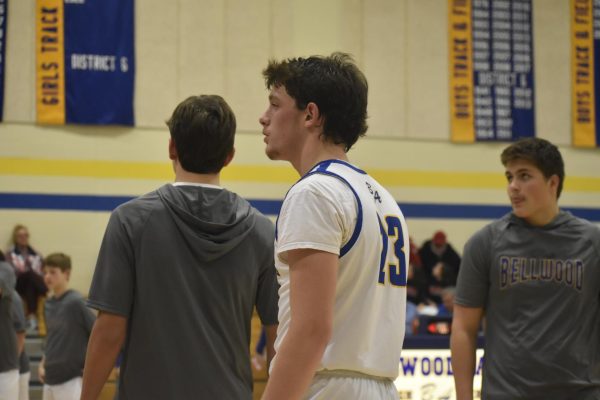BOOKLIGHT: The Infinite Moment of Us
Check out The Infinite Moment of Us.
September 20, 2017
Lauren Myracle’s The Infinite Moment of Us is a story of summer romance between two recently graduated high school seniors.
Wren, striving to be a perfect daughter, has always fulfilled her parents’ every wish of her. She has achieved all A’s and acceptance into a prestigious college’s med program, but finds herself torn between wanting to please her parents and wanting to take a gap year and do volunteer work in Guatemala. Charlie, who lives with a foster family, has always loved Wren but believes he is not good enough for her. The two make eye contact in the parking lot on the last day of school, and an “intense connection” is born.
The Infinite Moment of Us is cheesy, but not the kind the makes you blush and sigh romantically—it’s the kind that makes you rub your forehead in distress. The book will remind you every two pages that Wren and Charlie are made for each other, that nothing can come between them, and that they love each other so much. But it doesn’t make their relationship realistic or change the fact that the novel takes place over about three months and they have been dating for about two of them.
Even worse than the lack of realism in Wren and Charlie’s relationship is its unhealthiness. Both parties are possessive of each other. Wren’s irrational idea that Charlie should drop everything—including a scholarship to attend college and the care of his family—to be with her in Guatemala is presented as valid and romantic. It sets a bad example to impressionable young readers.
Myracle’s writing is plain and mostly dialogue-based, so you don’t get to know Wren and Charlie outside of each other. The novel could have been better if it would have explored Wren’s relationship with her controlling parents more, and shown more development towards their eventual acceptance of Wren’s future plans. Similarly, the novel could have fleshed out Charlie’s complicated feelings towards his foster parents more to give its readers a break from the couple’s constant fawning over each other. Instead, it feels like both characters’ home lives are a nonentity in the narrative.
This novel almost does something right, however. A good part of the second half of the book is dedicated to Wren and Charlie’s sexual relationship. The novel confronts teen sexuality in a realistic way, but it pushes the idea that when a straight couple has sex, they must take up their traditional gender roles. Once again, this idea could be detrimental to the novel’s target audience.
At the very least, The Infinite Moment of Us, with its beautiful cover art and lovely typography, will look good on your shelf and in your hands while you read it.









